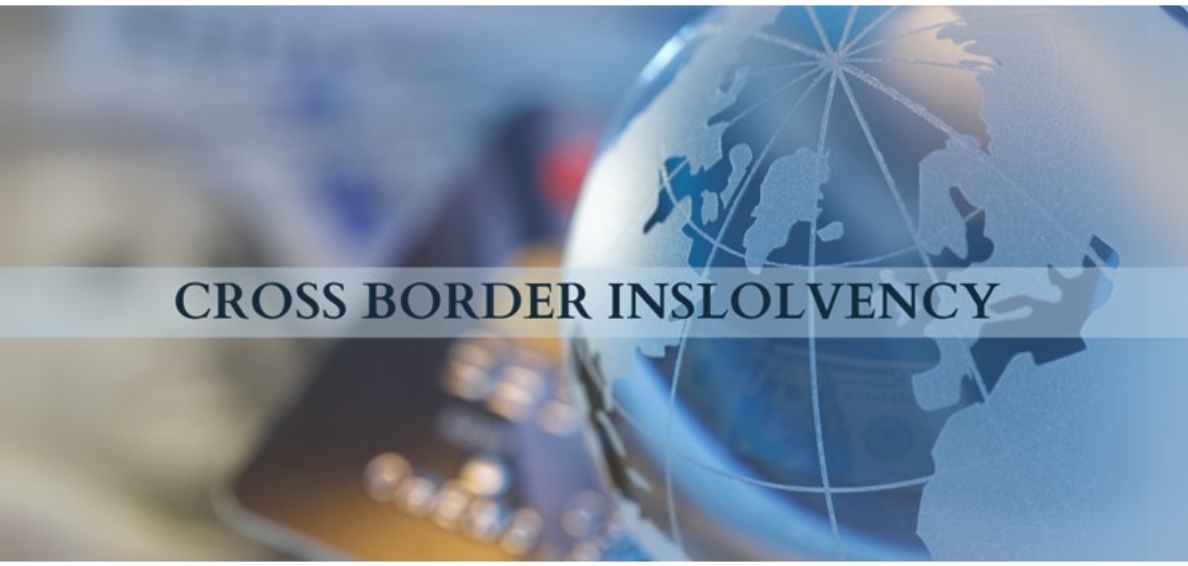- Courses
- GS Full Course 1 Year
- GS Full Course 2 Year
- GS Full Course 3 Year
- GS Full Course Till Selection
- CSAT
- 5 LAYERED ARJUNA Mentorship
- Public Administration Optional
- Online Program
- GS Recorded Course
- NCERT (Recorded 500+ Hours)
- Polity Recorded Course
- Geography Recorded Course
- Economy Recorded Course
- AMAC Recorded Course
- Modern India, Post Independence & World History
- Environment Recoded Course
- Governance Recoded Course
- Science & Tech. Recoded Course
- International Relations and Internal Security Recorded Course
- Disaster Management Module Course
- Ethics Recoded Course
- Essay Recoded Course
- Current Affairs Recoded Course
- ABOUT US
- OUR TOPPERS
- TEST SERIES
- FREE STUDY MATERIAL
- VIDEOS
- CONTACT US
Cross-Border Insolvency and Legal Reform in India
Cross-Border Insolvency and Legal Reform in India

- As international trade grows, the problems related to cross-border insolvency—the legal process that occurs when a company or individual with operations or assets in more than one country faces financial difficulties—become more significant.
- A clear, reliable, and effective insolvency law is crucial for economic stability, attracting foreign investment, and enabling companies to restructure.
- With India’s growing economy and its increasing ties with the global market, it's essential for the country to have a system that deals with cross-border insolvencies effectively.
What is Cross-Border Insolvency:
|
Historical Development of India's Insolvency Laws
Pre-Independence Insolvency Laws:
-
Indian Insolvency Act of 1848:
- India’s first insolvency law, introduced during British rule, focused mainly on domestic insolvencies and was influenced by British law.
- However, it was inadequate for handling international insolvency issues.
-
Presidency-Towns Insolvency Act of 1909:
- This law applied only to the presidency towns of Calcutta, Bombay, and Madras (now Chennai).
- It addressed insolvency cases in these cities but did not include solutions for international cases.
-
Provincial Insolvency Act of 1920:
- This law applied to rural and regional areas (mofussil) but still did not cover issues related to cross-border insolvencies.
These laws, while addressing domestic insolvencies, did not have any provisions to handle cross-border insolvencies, which was a major gap in the legal system.
Post-Independence Developments in Insolvency Law
Lack of Reform After Independence:
- After India’s independence, the insolvency laws remained largely unchanged, even though the need for reform became more pressing.
- Despite recommendations from the 3rd Law Commission's 26th Report in 1964 to modernize the insolvency framework, no significant changes were made for several decades.
Economic Liberalization in the 1990s:
- During the 1990s, India opened up its economy, encouraging more international trade and foreign investment.
- This highlighted the need for better laws to handle cross-border insolvencies and global commercial practices, as existing laws were inadequate for international cases.
Recommendations by Various Committees:
Several committees were formed to recommend changes to India’s insolvency laws, especially to address cross-border insolvencies:
-
Eradi Committee (2000):
- This committee recommended the reform of insolvency laws and suggested including provisions for handling cross-border insolvency.
-
Mitra Committee (2001) and Irani Committee (2005):
- Both committees emphasized the need to adopt the UNCITRAL Model Law on Cross-Border Insolvency (1997), a global standard that many countries follow to handle international insolvencies.
About UNCITRAL Model Law on Cross-Border Insolvency (1997)
|
Insolvency and Bankruptcy Code (IBC) - 2016
Introduction of the IBC:
- In 2015, the Bankruptcy Law Reform Committee (BLRC) was formed to create a new, comprehensive insolvency law for India.
- The result was the Insolvency and Bankruptcy Code (IBC), 2016, which primarily focused on insolvency in India.
- However, it did not address cross-border insolvency directly.
Cross-Border Insolvency Provisions (2018):
- After the Joint Parliamentary Committee raised concerns about the lack of cross-border insolvency provisions in the IBC, Sections 234 and 235 were added to the IBC in 2018.
-
Section 234:
- This section allows the Indian government to enforce IBC provisions in foreign countries if there are reciprocal agreements in place with those countries.
- However, at the time of enactment, no such agreements were made, making this provision largely ineffective.
-
Section 235:
- This allows Indian courts to seek assistance from foreign courts through a letter of request, enabling the courts to cooperate in insolvency cases that involve multiple countries.
Legal Challenges and Judicial Scrutiny
State Bank of India vs Jet Airways (2019):
- In the case of State Bank of India vs Jet Airways, the National Company Law Tribunal (NCLT) pointed out two problems:
- No Reciprocal Agreement: There was no agreement between India and the Netherlands (where Jet Airways had operations) to handle cross-border insolvency cases.
- Non-notification of Sections 234 and 235: These sections of the IBC had not been notified by the Indian government, making them unenforceable in practice.
The NCLT called these sections “dead letters”, meaning they existed on paper but had no real application because they couldn’t be used due to the lack of reciprocal agreements and non-notification.
Cross-Border Insolvency Protocols:
- In the Jet Airways case and other similar situations, ad-hoc cross-border insolvency protocols have been used. T
- hese are temporary, case-specific solutions that help resolve international insolvency cases.
- However, these are not long-term solutions and come with problems such as delays, higher costs, and often result in lower asset recovery due to complex legal issues.
Recommendations from Committees:
-
Insolvency Law Committee (2018):
- This committee recommended that India adopt the UNCITRAL Model Law on Cross-Border Insolvency, which is a globally recognized framework for handling cross-border insolvencies.
-
Cross-Border Insolvency Rules/Regulation Committee (2020):
- This committee also recommended a structured framework to address cross-border insolvency and pointed out that the existing provisions were not enough to manage complex international insolvency cases.
-
Parliamentary Standing Committee (2021 and 2024):
- The Thirty-Second Report (2021) and Sixty-Seventh Report (2024) of the Parliamentary Standing Committee highlighted the urgent need for a proper framework for cross-border insolvency and stressed adopting the UNCITRAL Model Law.
Key Issues in India’s Cross-Border Insolvency Framework
-
Ad-Hoc Solutions vs. Structured Framework:
- Cross-border insolvency protocols have worked for some cases but are temporary solutions.
- They require court approval in every case, which leads to delays, high costs, and often results in lower asset recovery.
- A permanent, structured framework is needed for better management of cross-border insolvency.
-
Jurisdiction Issues with NCLT:
- Section 60(5) of the IBC limits the role of civil courts in insolvency matters, giving NCLT exclusive control.
- However, the NCLT cannot recognize or enforce foreign judgments, which limits its ability to handle cross-border insolvency cases effectively.
- Recommendation: The NCLT should be given powers to recognize and enforce foreign judgments in cross-border insolvency cases to improve efficiency.
-
Implementation Gaps:
- Rule 11 of the NCLAT Rules (2016) could give the NCLT more flexibility in dealing with cross-border insolvencies, but it has not yet been implemented.
- This means that the NCLT cannot fully use its powers to manage cross-border insolvency cases.
Urgent Need for Reform
-
Adopt the UNCITRAL Model Law:
- The UNCITRAL Model Law on Cross-Border Insolvency provides a global framework for managing international insolvencies.
- It covers cooperation between courts, coordination of proceedings, and recognition of foreign insolvency cases.
- Adopting this law will help India create a more effective and predictable system for cross-border insolvency.
-
Improve Communication Between Courts:
- Adopting the Judicial Insolvency Network (JIN) Guidelines (2016) and Modalities of Court-to-Court Communication (2018) would help improve the way Indian courts communicate with foreign courts.
- This would make the process more transparent, efficient, and cooperative.
-
Expanding NCLT's Powers:
- To manage cross-border insolvencies effectively, the NCLT needs to have the power to recognize and enforce foreign insolvency decisions.
- This would make the system more comprehensive and effective in dealing with international cases.
Conclusion and Way Forward
India’s insolvency laws, especially for cross-border insolvency, are still not fully developed. Although Sections 234 and 235 of the IBC provide a framework, they are not practical because of issues such as the lack of reciprocal agreements and the inability of the NCLT to enforce foreign judgments.
|
Also Read |
|



